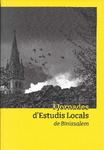|
Abstract:
|
[CAT] Des de l’inici d’aquest segle, s’ha produït un elevat creixement demogràfic en la nostra localitat, Binissalem. El canvi demogràfic detectat suposa conseqüències lingüístiques sobre el territori: es fa més accentuat el fet que no puguem parlar del municipi de Binissalem com un indret homogeni pel que fa al sistema lingüístic que caracteritza el nostre poble, basat en un inventari vocàlic tònic heptafonèmic. Consegüentment, podem considerar el poble de Binissalem com un territori d’hibridesa lingüística. Per arribar a aquestes conclusions, a través del Treball de Fi de Grau Anàlisi del tractament actual de les /’ə/ i /’ɛ/ en el parlar de Binissalem (2016), es va realitzar un estudi intergeneracional centrat en un total de quatre cent cinquanta tres informants, que anaven dels 4 als seixanta-cinc anys, en què s’analitzava el seu parlar i el dels seus antecessors. Sis anys després, s’analitzaran els resultats d’aquest treball sociolingüístic que s’estan fent cada vegada més evidents en el nostre poble. ; [ENG] Since the beginning of this century, there has been a significant demographic growth in our locality, Binissalem. The detected demographic change has linguistic consequences on the territory: Binissalem can no longer be considered a homogeneous place in terms of the linguistic system that characterizes our town becomes more pronounced. This system is based on a tonic heptaphonic vocalic inventory. Consequently, we can consider Binissalem as a territory of linguistic hybridity. To reach these conclusions, an intergenerational study was conducted through the Final Degree Project “Analysis of the current treatment of /’ə/ and /’ɛ/ in the speech of Binissalem” (2016). The study focused on a total of 153 informants ranging from 4 to 65 years old, analyzing their speech and that of their predecessors. Six years later, the results of this sociolinguistic work, which are becoming increasingly evident in our town, will be analyzed. |

 Origen, evolució i estat actual del fenomen lingüístic característic de Binissalem
Origen, evolució i estat actual del fenomen lingüístic característic de Binissalem